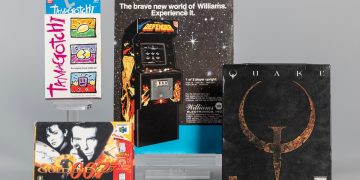Researchers at Cornell University have crafted an innovative tool called ‘MouseGoggles,’ a tiny VR headset equipped with eye-tracking specifically designed for mice. This new technology enables the study of complex behaviors during neural recordings, opening up new possibilities for research.
Traditionally, VR systems for small animals were hampered by their bulkiness, limited immersive capabilities, and lack of sophisticated features like eye-tracking. However, with the introduction of MouseGoggles, which is highlighted in a recent research paper, Cornell’s team aims to delve deeper into the workings of the mouse brain, which serves as a crucial model for both behavioral and neurological studies.
The research team successfully validated their study by recording neural activity in the visual cortex. They showed that the images projected through the headset were both clear and effective. Moreover, they demonstrated the immersive qualities of the VR headset through tests involving hippocampal activity, reward-based learning experiences, and reactions to virtual looming objects that induced fear.
Chris Schaffer, a professor of biomedical engineering, and Ian Ellwood, an assistant professor specializing in neurobiology and behavior, led the research team. They are optimistic that their work will encourage more widespread use of VR techniques within neuroscience research.
Matthew Isaacson, a postdoctoral researcher, shared with the Cornell Chronicle his excitement about the project. He said, “It’s quite rare to develop a tool that not only offers enhanced experimental power over existing technologies but is also simpler and cheaper to produce. This advancement makes the technology far more accessible, allowing many more laboratories to take advantage of it.”
One of the remarkable aspects of MouseGoggles is its use of affordable, readily available components. These include smartwatch displays and small lenses, all contributing to a compact system. The headset also utilizes popular tools like the Godot game engine and a Raspberry Pi 4, which they customized with a split-screen display driver.
Looking ahead, the team’s pioneering efforts may lead to a surge in interest in creating lightweight, standalone headsets for larger animals like tree shrews and rats. Currently, MouseGoggles offers a fixed-head experience that simulates movement via a ball-shaped treadmill. The researchers are also keen on enhancing the VR experience by integrating sensory features like taste and smell.
Chris Schaffer concluded, sharing with the Cornell Chronicle, “I think moving towards a five-sense virtual reality system for mice holds great promise. It could be instrumental in experiments aimed at deciphering intricate behaviors, where mice process sensory information and weigh those inputs against internal motivations, such as hunger or rest needs, before making behavioral decisions.”










![[PS5] Review of Lost Records: Bloom and Rage – Tape 2 [PS5] Review of Lost Records: Bloom and Rage – Tape 2](https://www.intergamerz.com/wp-content/uploads/2025/04/Complimentary-Game-Lost-Records-Bloom-and-Rage-PS5-Giveaway-North-360x180.jpg)






















![[Industry Direct] PHI Studio & Agog Invite Applications for a Four-Week Residency for Immersive Artists [Industry Direct] PHI Studio & Agog Invite Applications for a Four-Week Residency for Immersive Artists](https://www.intergamerz.com/wp-content/uploads/2025/05/Industry-Direct-PHI-Studio-Agog-Invite-Applications-for-a-360x180.jpg)












